Stress can come in many forms and most of us will experience it at some point in our lives. While it is not always insurmountable, prolonged stress can lead to serious negative impacts on one’s health. A 2020 study of the physical and psychological effects of working at home found that chronic stress may be directly linked with anxiety, depression, pain, and fatigue. Physical conditions including heart disease, digestive disorders, and cancer are also a potential risk for those under chronic stress. (1)
Research is limited on the direct treatment of stress itself, with most evidence focused on the conditions that are linked to, or caused by, prolonged stress. These can include antidepressants, sleeping pills, talk therapy, and other medications to treat physical side effects. Psychedelics may provide an alternative to traditional Western medicine for treating stress and could help change how we process and deal with it. (2) (3)
What Causes Stress?
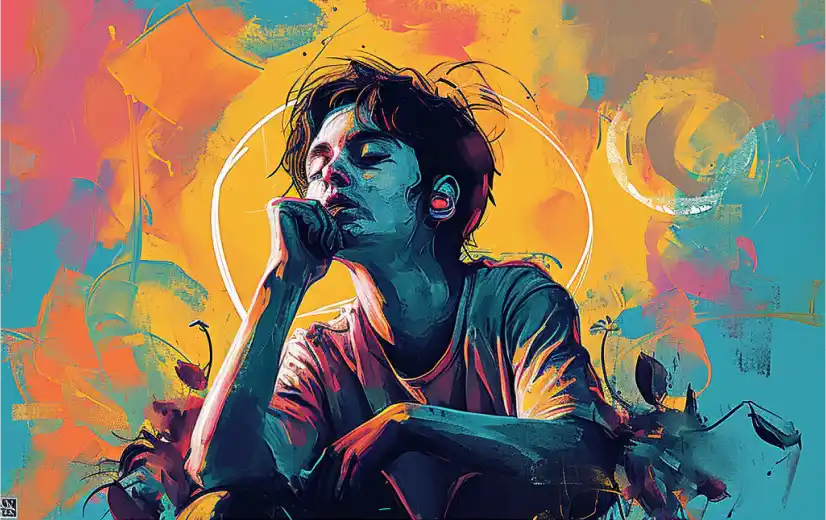
Stress is our body’s automatic response to a negative external trigger, such as a perceived threat, challenge, or obstacle. Typically, when discussing stress, we mean psychological stress, a state of emotional tension or pressure as a result of these factors. (4)
Common causes of stress include: (5)
Keep Up with Uncensored Psychedelic Trends
Join our newsletter at Psychedelics Uncensored.
We respect and protect your privacy. By subscribing your info will be subject to our privacy policy . Unsubscribe easily at any time
Situations in which you might experience stress include: (5)

Post-traumatic stress disorder (PTSD) is another mental health condition that can be triggered by exposure to an extreme stressor, such as war, violence, abuse, natural disasters, or sexual harassment and assault. (6)
Some people experience the symptoms of stress — insomnia, fatigue, difficulty concentrating, and muscle tension — but in the absence of an external stressor this could be mistaken as stress and may actually be caused by anxiety or another mental health condition. Anxiety can differ from stress in that it may not disappear in the absence of external stressors. (4)
Psychedelics To Help With Stress and Anxiety
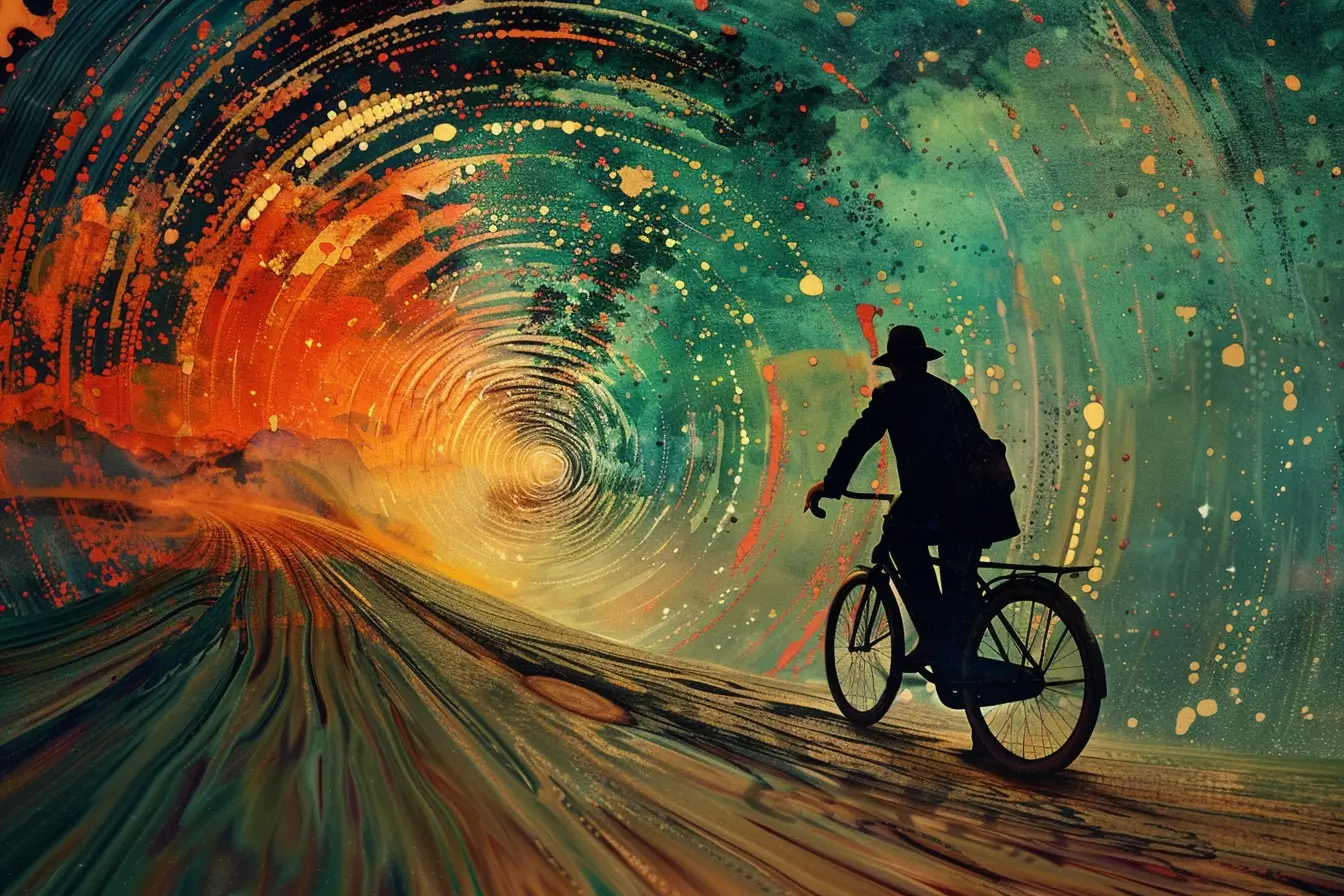
The links between psychedelics and positive mental health benefits have been studied and well-documented since Albert Hoffmann’s historic self-experiments in 1943. On a day now famously known as “Bicycle Day”, Hoffmann purposefully ingested a large dose of LSD(250 μg). Though originally panicked by the substance’s effects, he later documented feelings of calmness and happiness. In the morning, Hoffmann recorded a sense of “well-being, pleasure with life, and a deeper appreciation for the beauty of the world about him.” (7)
Keep Up with Psychedelic Trends
Get uncensored psychedelic news, events, and updates. Join Psychedelics Uncensored!
We respect and protect your privacy. By subscribing your info will be subject to our privacy policy . Unsubscribe easily at any time
In 1955, psychoanalyst Sidney Cohen had this to say about his first experience with LSD: “Problems and strivings, the worries and frustrations of everyday life vanished; in their place was a majestic, sunlit, heavenly inner quietude.” Since these early days of modern psychedelic experimentation, research has continued into how psychedelics affect mood and reduce anxiety and stress. (8)(7)
Studies have shown that psychedelics such as psilocybin, LSD, ketamine, MDMA, and DMT may hold the potential to help with a variety of stress-related conditions such as obsessive-compulsive disorder, PTSD, generalized anxiety disorder, and end-of-life anxiety. For example, a study performed at the University of Connecticut found that a single high dose of psilocybin reduced anxiety in 52% of 51 cancer patients. Another study from 2023 measured the effectiveness of MDMA-assisted therapy (MDMA-AT) for patients with moderate to severe PTSD. This data suggests that MDMA-AT reduced PTSD symptoms in participants with moderate to severe PTSD and was generally well tolerated. (9)(10)
In recent years, increased public acceptance of psychedelics has led to them being used outside of controlled scientific settings to manage stress and other day-to-day mental health conditions. In a 2018 interview with Time, author Michael Pollan said that during the psychedelic experience, “all of our customary defenses that we use to deal with life and the world [are] suspended for a period of time, and that creates this opening, this plastic moment where people can reexamine themselves and get some perspective on their habitual ways of thinking and doing.”(11)
Microdosing Psychedelics for Stress and Anxiety

Microdosing psychedelics may curb anxiety in daily life, such as during the workday or while raising children. In a recent article published on Colorado Public Radio’s website, busy mothers in Colorado raved about the benefits of microdosing, saying the practice has reduced the stresses of parenthood and made them happier, more peaceful, and more organized. “You’re 10% more patient, 10% more joyful, maybe 10% more willing to play and roll around in the grass with your kids. And 10% goes a pretty long way. Sometimes that’s all you need,” said one mother. (8) (12)
A 2018 study asked people (via an online questionnaire) with a diagnosed mental or physiological condition and with experience microdosing psychedelics how they would rate the effectiveness of microdosing for managing their condition vs traditional treatment (such as medication). Of the initial 5,681 respondents to the questionnaire, 410 met the criteria of having a mental health condition and experience microdosing at least one psychedelic. Among these, the majority reported that they felt microdosing psychedelics was better for managing their mental health condition than traditional treatment (60.5% reported using psilocybin, 56.3% used LSD with a crossover recording using both). However, the results also indicated that participants felt higher doses were more beneficial than microdoses. (13)
Psilocybin for Stress and Anxiety
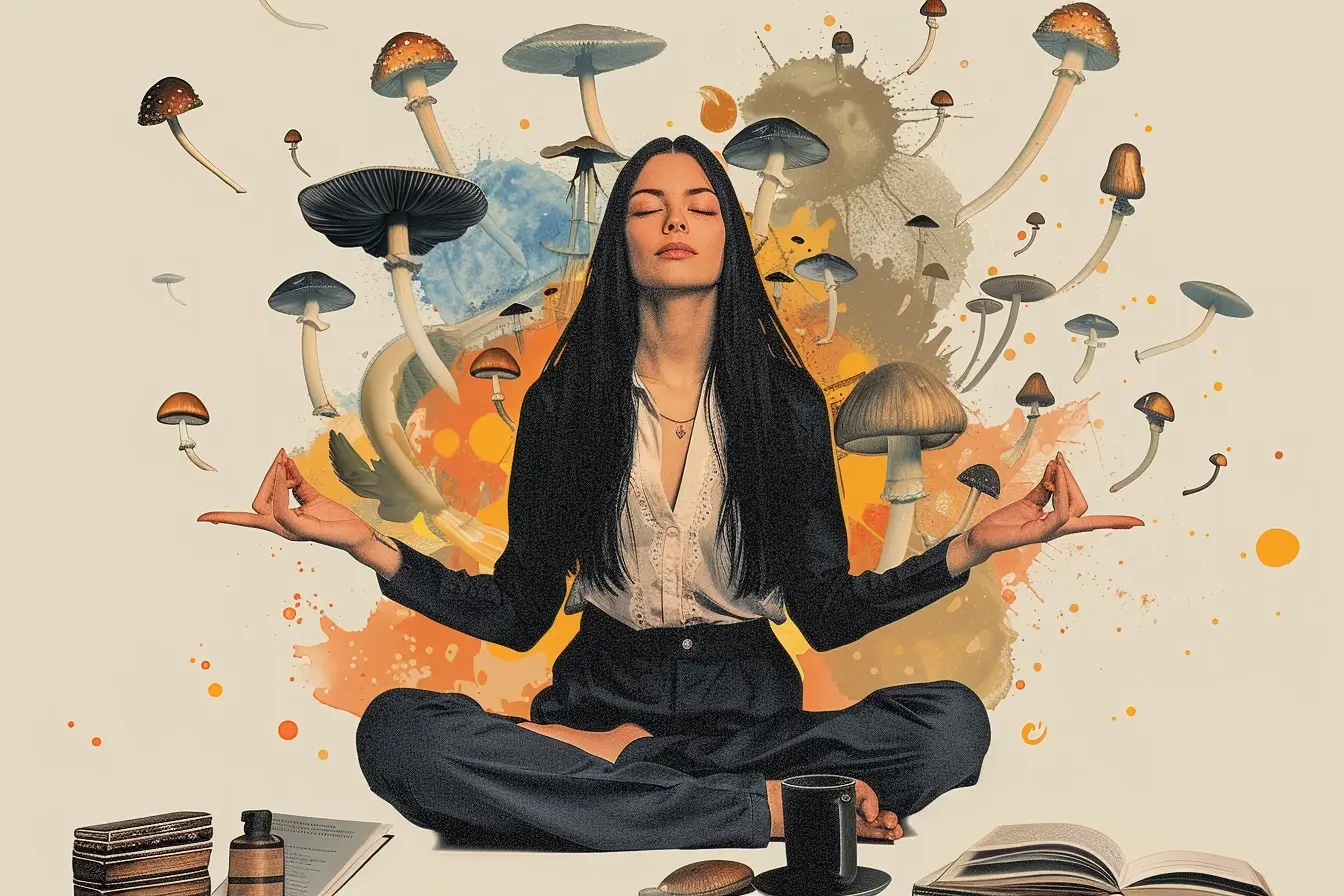
How Psilocybin Might Help
Exactly how psilocybin affects brain function and alleviates negative symptoms of mental health conditions is not yet fully understood. One hypothesis suggests that psilocybin resets the brain’s connectivity patterns, allowing for new perspectives to be drawn, and for emotional responses to be recalibrated. However, much more is required to understand the underlying neural mechanisms. (14)
Researchers are considering whether psilocybin can specifically treat anxiety disorders and symptoms in healthy populations. Promisingly, two studies have found that a single dose of psilocybin can reduce acute anxiety for one week, and personality-related anxiety (anxiety linked to how we feel, think, and behave in everyday life) for up to a week or a month. (15) (16) (17) (18) (19)
Additional research suggests that psilocybin may have a positive effect on attitudes, mood, life satisfaction, gratitude, and behavior for up to a year. (20) (21)
Psilocybin Side Effects
While the majority of psilocybin side effects may be positive, those with less experience with psychedelic substances may observe some short-term discomfort. Some of these may be offset by ensuring a positive “set and setting” (the mindset you have going into a psychedelic experience and the environment you are in) before taking psilocybin.
Psychedelics are powerful substances, so speaking with a doctor, therapist, or psychedelic integration coach beforehand is recommended. (22) (23) (24)
Potential short-term side effects include: (25)
Historical Uses of Psilocybin for Stress
Indigenous peoples in Mesoamerica, such as the Mazatec of Mexico, have used psychedelic mushrooms in healing rituals for centuries. Although not specifically used for stress, these indigenous people will use psilocybin to treat spiritual and psychological ills and other ailments that may have been linked to stress. (26)
Microdosing Psilocybin
A study of nearly 1,000 microdosers of psilocybin linked it to moderate improvements in mood and mental health. “It’s akin to walking outside and the sun is suddenly out,” microdoser Erin Royal told the New York Times. “It reminds you that you are a person who can feel positive things and notice things that are beautiful.” (27) (28)
LSD for Stress and Anxiety
How LSD Might Help
One of the mechanisms through which LSD affects brain function is through a specific serotonin receptor called 5-HT2A, the same receptor that antipsychotics and antidepressants impact. Some researchers hypothesize that LSD interacts with this serotonin receptor in a way that helps with emotional processing, opening new avenues for psychotherapy. (29) (30)
Research shows that LSD may help with anxiety and stress. A study published in 2022 found that mice treated with a specific dose (daily for 7 days) of LSD showed decreased stress-induced anxiety-like behavior, in stressed mice compared to their non-stressed counterparts. (31)
LSD Side Effects
The side effects of LSD vary greatly depending on the dose (as well as a variety of other factors). A microdose of LSD may cause positive mood changes with mild to no sensory distortions. Larger doses can cause open and close-eyed visuals, auditory hallucinations, and improved mood.
The short-term effects of LSD are usually broken up into two spectrums colloquially known as a “good trip” or a “bad trip”. A good trip can be an extremely positive experience that can lead to long-term benefits. A bad trip can have the opposite effect, potentially causing fear and panic due and bringing up past trauma. It should be noted that potential negative experiences can often be minimized by setting an intention for the psychedelic and paying attention to “set and setting.” (32)
Potential short-term side effects of LSD include:
Historical Uses of LSD for Stress and Anxiety
During the 1950s and into the early 1970s, some psychiatric and medical professionals experimented with LSD as a possible treatment for several conditions. Some of these include addiction, depression, and postpartum depression, among others. As with other forms of psychedelic research, most studies on the therapeutic benefits of LSD were halted in the U.S. after the Controlled Substances Act (1970) made it a Schedule I substance (deemed to have no medical benefit and high likelihood of abuse). However, as with other psychedelic substances, LSD research began to gain traction again in the 21st century.(33) (34)
Highlighting this renaissance in LSD studies, the FDA (Food & Drug Administration) has recently granted LSD research its support by granting Breakthrough Therapy Designation to an LSD program for the treatment of generalized anxiety disorder (GAD). This clinical trial, run by the private company Mind Medicine Inc., has shown positive results in the treatment of anxiety using LSD (lysergide d-tartrate).(35)
Microdosing LSD for Stress
Studies have found that microdosing LSD may lead to mood enhancements without feeling any of the hallucinogenic or sensory effects.(32) (36)
In a 2019 Guardian article on microdosing, various people spoke about how microdosing LSD was helping them with their daily lives. One individual, a senior university lecturer, microdosed 1P-LSD (a derivative of LSD) every third day of the month to help manage social situations and improve her mood. “I felt unusually alive,” she noted. “Lights looked sparkly. I felt delighted. After the first month, I tweaked it so that dose days coincided with, say, visiting family. I enjoyed playing with the kids more when I was microdosing. Likewise going to weddings – I found it easier to be interested in people.” (37)
Ketamine for Stress and Anxiety
How Ketamine Might Help
While there has been little research into ketamine as a direct treatment for stress, studies have shown that it has applications for anxiety disorders such as social anxiety and obsessive-compulsive disorder (OCD). (38) (39)
Ketamine acts on one of glutamate’s receptors, a neurotransmitter with a variety of functions in the brain. One of glutamate’s many functions in the brain is to modulate the brain’s response to anxiety-inducing stimuli. The effect of glutamate in anxiety disorders is becoming more recognized, with the belief that drugs that modulate glutamatergic function through glutamate receptors have the potential to improve current treatment options.
While traditional anti-anxiety medication can take weeks to have an effect, ketamine causes the same generation of glutamate in as little as two hours (depending on the delivery method). Ketamine may also be more effective at treating anxiety than some more traditional medications when treating co-occurring anxiety and depression. (38) (39) (40)
Ketamine Side Effects
Ketamine is a dissociative drug, meaning it can cause a sense of detachment from the physical space you are in. This can cause a sensation of euphoria and relaxation but can also lead to anxiety and confusion. In high doses, it can cause a disorientating detachment from reality, often referred to as a “k-hole.” (41)
Side effects of ketamine can often be felt after 15 minutes of administration if snorted, 30 minutes if swallowed, and one minute if administered intravenously. Residual effects can last for up to 24 hours. (7)
Common short-term side effects of ketamine include: (41)
It is important to consult a healthcare professional before starting ketamine therapy if you have a history of high blood pressure, heart disease, psychosis (or a psychosis-inducing condition), substance use disorder, or are currently pregnant. (42)
Microdosing Ketamine
There has been little research into microdosing ketamine for the reduction of stress. A systematic review of ketamine research trials focusing on anxiety disorders showed that the substance showed potential for managing symptoms of social anxiety disorder including reducing panic, irritability, and other anxiety symptoms. However, the data reviewed showed that low doses (less than 0.5 mg/kg) were less effective at reducing symptoms than typical or larger doses. (43)
MDMA for Stress and Anxiety
How MDMA Might Help
MDMA promotes monoamine reuptake inhibition (MAOI) and release, effectively modulating fear memory reconsolidation (affecting the emotional connection to painful memories), reducing fear, and promoting prosocial behavior, all of which may have the potential to reduce stress and anxiety.
Studies into MDMA-assisted therapy have shown promising signs in the treatment of those suffering from PTSD. Researchers are also proposing that MDMA-assisted therapy may be beneficial for treating other stress-related conditions such as social anxiety disorder, general anxiety, and obsessive-compulsive disorder, markedly for those who are treatment-resistant. (44) (45) (26) (10)
A pilot study found that some doses of MDMA helped reduce social anxiety symptoms during social situations in adults with autism. More research is needed to fully understand MDMA’s effects on the brain, but current evidence points to MDMA-assisted therapy being a viable alternative to traditional treatment. (46)
MDMA Side Effects
The acute effects of MDMA can usually be felt within 45 minutes of administration. For most, these effects will include increased social engagement (becoming talkative and open with others), emotional empathy and warmth, and an enhanced sense of well-being. Visual distortions are also common, as is heightened sensory perception. (47)
There is also a range of adverse effects associated with MDMA, including heightened blood pressure, faintness, panic attacks, and in extreme cases seizures or fatal overdoses. (47)
MDMA can affect the cardiovascular system, so those with a history of heart conditions and/or high blood pressure should speak to a healthcare provider before using. (46)(47)
Short-term side effects of MDMA include: (47)
Historical Uses of MDMA for Stress
Despite being first synthesized in 1912, interest in MDMA as a psychiatric medication didn’t arise until 1977. Alexander Shulgin, a chemist conducting research on psychoactive substances from a shed in his garden, introduced MDMA to a psychotherapist named Leo Zeff. Zeff would go on to administer the substance to around 4000 people between 1977 and 1985, and trained over 150 therapists to work with the substance.
Zeff’s work would inspire other therapists to examine the effects of MDMA on a variety of conditions. While most of these studies and trials centered on wellness and personal development, there were many instances of subjects expressing reduced fear and other symptoms of anxiety. (48)
Other notable studies included work by Ann Shulgin, Sallie Kueny, Joseph Downing (The Exuma Island Institute), George Greer, and Rick Ingrasci. (48) (49)
Microdosing MDMA for Stress
Most information on the benefits of microdosing MDMA stems from the ongoing studies into MDMA-assisted therapy for PTSD. Several studies and trials around the world have proven that managed doses of MDMA administered in conjunction with talk therapy can help those experiencing stress and anxiety relating to traumatic experiences. This has led to MDMA-assisted therapy becoming a prescribable treatment option in Australia. As of July 2023, GPs can refer patients who meet the criteria for MDMA-assisted therapy to a psychiatrist who is an authorized prescriber. While the amount of authorized prescribers is still low and access to treatment may not be available in all areas, clinical trials are still taking place across the country as well as overseas. (50)(51)
Clinical Trials & Research on Psychedelics and Stress
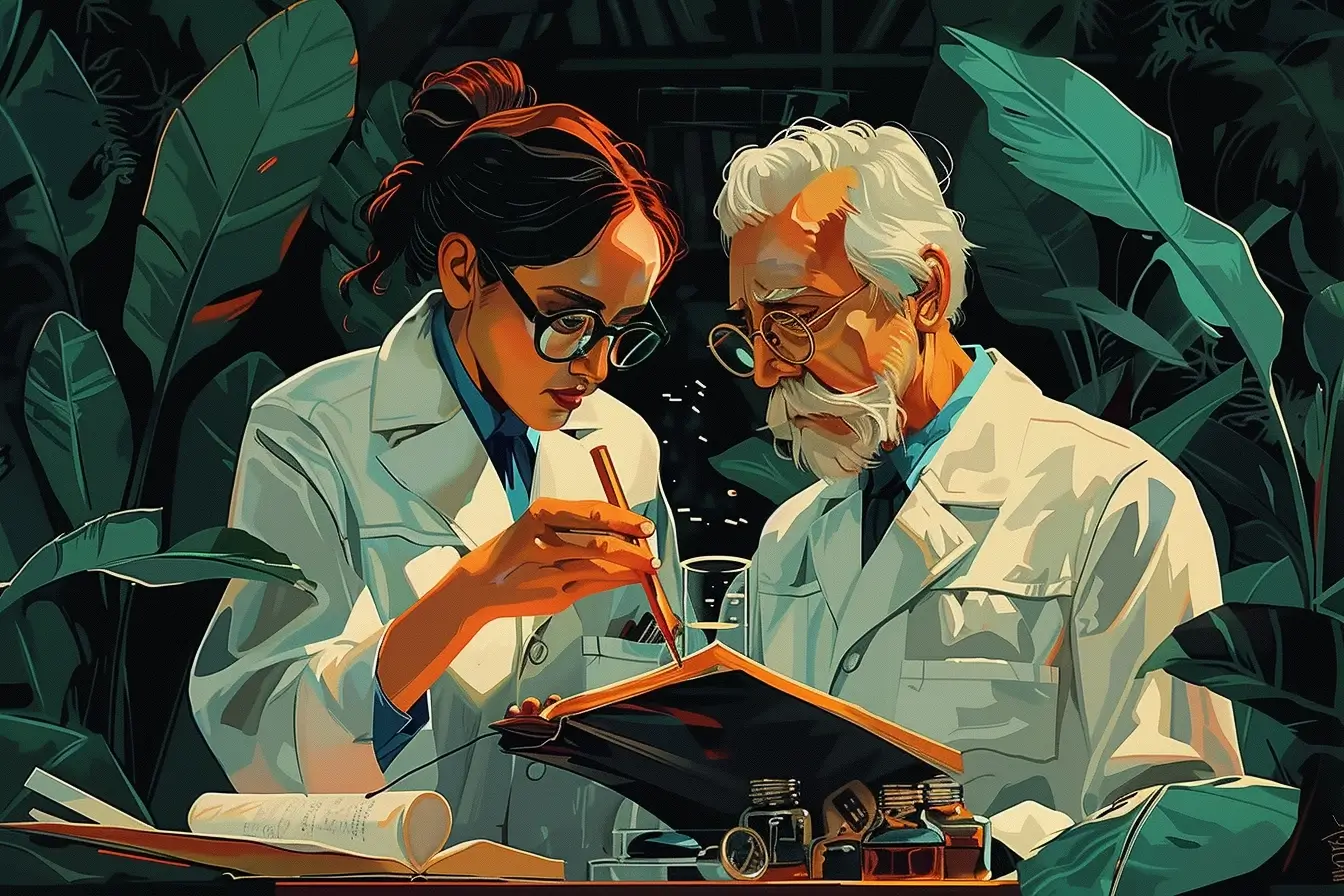
Advancements in psychedelic research have increased in the past decade, with studies and trials being conducted around the world. Many of these studies focus on how psychedelics can reduce symptoms for a range of mental health conditions, from end-of-life anxiety to post-traumatic stress disorder.
Below are some of the most promising studies on the effects of psychedelics on stress and other mental health conditions.
01
“Rapid and sustained symptom reduction following psilocybin treatment for anxiety and depression in patients with life-threatening cancer: A randomized controlled trial,” 2016:
In a double-blind, placebo-controlled study, 29 patients with life-threatening cancer received either a single dose of psilocybin or niacin (vitamin B3), along with psychotherapy. Psilocybin produced “immediate, substantial, and sustained improvements” in participants’ anxiety and depression and declines in cancer-related demoralisation and hopelessness, effects that were sustained in the 6.5-month follow-up.
02
“Effects of N,N-dimethyltryptamine (DMT) on rat behaviors relevant to anxiety and depression,” 2018:
While DMT initially increased anxiety responses in rats, in the long term it reduced anxiety by facilitating fear extinction. Psilocybin and MDMA have also been shown to promote cued fear extinction in rodents.
03
“A systematic study of microdosing psychedelics,” 2019:
This study followed 98 people who microdose serotonergic psychedelics (those that act on serotonin) including LSD, psilocybin, and mescaline for six weeks. They recorded their mood daily and completed assessments measuring their mood, well-being, attention, and creativity. The study found reduced levels of stress and depression, as well as improved attention.
04
“Emotions and brain function are altered up to one month after a single high dose of psilocybin,” 2020:
One week after a high dose of psilocybin, reduced negative mood and increased positive mood to emotionally-conflicting stimuli remained constant, and after one month the positive mood response remained elevated.
05
“Naturalistic Use of Mescaline Is Associated with Self-Reported Psychiatric Improvements and Enduring Positive Life Changes,” 2021:
Most individuals with mental health conditions including depression, anxiety, and post-traumatic stress disorder (PTSD) who have taken mescaline self-reported improvements following their most mystical mescaline experience.
06
“Psilocybin microdosers demonstrate greater observed improvements in mood and mental health at one month relative to non-microdosing controls,” 2022:
Researchers followed 953 people microdosing psilocybin and 180 who weren’t for 30 days and linked microdosing to small- to medium-sized improvements in mood and mental health.
07
“Repeated lysergic acid diethylamide (LSD) reverses stress-induced anxiety-like behavior, cortical synaptogenesis deficits and serotonergic neurotransmission decline,” 2022:
Researchers gave LSD to mice exposed to stress conditions and found it prevented anxiety-like behaviors and cellular changes in the brain induced by stress. Repeated LSD administration prevented the mice’s anxiety behaviors from worsening under chronic stress conditions.
08
“Decreases in State and Trait Anxiety Post-psilocybin: A Naturalistic, Observational Study Among Retreat Attendees,” 2022:
Participants in a psychedelic retreat demonstrated lower levels of state and trait anxiety for up to one week after consuming psilocybin mushrooms. Notably, the study found that the treatment setting, specifically a group psychedelic retreat, played a significant role in its effectiveness.
09
“Psilocybin induces acute and persisting alterations in immune status and the stress response in healthy volunteers,” 2023:
60 volunteers received either a full dose of psilocybin or a placebo. Some pro-inflammatory markers—elevated in people with stress-related disorders such as depression—were decreased in the psilocybin group immediately after the dose was administered. The greater the reduction of certain inflammatory markers after seven days, the more persisting positive effects on mood the participants reported.
Sources

1. Oakman, J., Kinsman, N., Stuckey, R. et al. (2020). A rapid review of mental and physical health effects of working at home: how do we optimise health?BMC Public Health https://doi.org/10.1186/s12889-020-09875-z
2. Mind. (2022, March). Treatment for stress. Mind.org.uk. https://www.mind.org.uk/information-support/types-of-mental-health-problems/stress/treatment-for-stress/
3. Lowe, H., Toyang, N., Steele, B., Grant, J., Ali, A., Gordon, L., & Ngwa, W. (2022). Psychedelics: Alternative and Potential Therapeutic Options for Treating Mood and Anxiety Disorders. Molecules, 27(8), 2520. https://doi.org/10.3390/molecules27082520
4. What’s the difference between stress and anxiety? (2022, February 14). https://www.apa.org. Retrieved November 6, 2023, from https://www.apa.org/topics/stress/anxiety-difference
5. Causes of stress. (n.d.). Mind. Retrieved November 6, 2023, from https://www.mind.org.uk/information-support/types-of-mental-health-problems/stress/causes-of-stress/
6. Causes of PTSD. (n.d.). Mind. Retrieved November 6, 2023, from https://www.mind.org.uk/information-support/types-of-mental-health-problems/post-traumatic-stress-disorder-ptsd-and-complex-ptsd/causes/
7. Belouin, S. J., & Henningfield, J. E. (2018). Psychedelics: Where we are now, why we got here, what we must do. Neuropharmacology, 142, 7–19. https://doi.org/10.1016/j.neuropharm.2018.02.018
8. Sherry, A. (2023, October 23). Stressed out, busy moms say microdosing mushrooms makes life easier and brighter. Researchers caution that they are ‘experimenting on themselves.’ Colorado Public Radio. https://www.cpr.org/2022/08/16/moms-microdosing-mushrooms/
9. Breen, T. (2023, April 21). Psychedelics May Better Treat Depression and Anxiety Symptoms than Prescription Antidepressants for Patients with Advanced Cancer. UConn Today. https://today.uconn.edu/2023/04/psychedelics-may-better-treat-depression-and-anxiety-symptoms-than-prescription-antidepressants-for-patients-with-advanced-cancer-2/
10. Mitchell, J. M., Et Al. (2023). MDMA-assisted therapy for moderate to severe PTSD: a randomized, placebo-controlled phase 3 trial. Nature Medicine, 29, 1–8. https://doi.org/10.1038/s41591-023-02565-4
11. Oaklander, M. (2018, May 16). This will change your mind about psychedelic drugs. Time. https://time.com/5278036/michael-pollan-psychedelic-drugs/
12. Rootman, J. M., Kryskow, P., Harvey, K., Stamets, P., Santos-Brault, E., Kuypers, K. P. C., Polito, V., Bourzat, F., & Walsh, Z. (2021). Adults who microdose psychedelics report health related motivations and lower levels of anxiety and depression compared to non-microdosers. Scientific Reports, 11(1). https://doi.org/10.1038/s41598-021-01811-4
13. Ross, S., Bossis, A. P., Guss, J., Agin-Liebes, G., Malone, T. C., Cohen, B. D., Mennenga, S. E., Belser, A. B., Kalliontzi, K., Babb, J. S., Su, Z., Corby, P., & Schmidt, B. L. (2016). Rapid and sustained symptom reduction following psilocybin treatment for anxiety and depression in patients with life-threatening cancer: A randomized controlled trial. Journal of Psychopharmacology, 30(12), 1165–1180. https://doi.org/10.1177/0269881116675512
14. Smausz, R., Neill, J., & Gigg, J. (2022). Neural mechanisms underlying psilocybin’s therapeutic potential – the need for preclinical in vivo electrophysiology. Journal of Psychopharmacology, 36(7), 781–793. https://doi.org/10.1177/02698811221092508
15. Grob, C. S., Danforth, A. L., Chopra, G. S., Hagerty, M., McKay, C. R., Halberstadt, A. L., & Greer, G. (2011). Pilot study of psilocybin treatment for anxiety in patients with Advanced-Stage Cancer. Archives of General Psychiatry, 68(1), 71. https://doi.org/10.1001/archgenpsychiatry.2010.116
16. Ross, S., Bossis, A. P., Guss, J., Agin-Liebes, G., Malone, T. C., Cohen, B. D., Mennenga, S. E., Belser, A. B., Kalliontzi, K., Babb, J. S., Su, Z., Corby, P., & Schmidt, B. L. (2016). Rapid and sustained symptom reduction following psilocybin treatment for anxiety and depression in patients with life-threatening cancer: A randomized controlled trial. Journal of Psychopharmacology, 30(12), 1165–1180. https://doi.org/10.1177/0269881116675512
17. Barrett, F. S., Doss, M. K., Sepeda, N. D., Pekar, J. J., & Griffiths, R. R. (2020). Emotions and brain function are altered up to one month after a single high dose of psilocybin. Scientific Reports, 10(1). https://doi.org/10.1038/s41598-020-59282-y
18. Kiraga, M., Kuypers, K. P., Uthaug, M. V., Ramaekers, J. G., & Mason, N. L. (2022). Decreases in state and trait anxiety post-psilocybin: a naturalistic, observational study among retreat attendees. Frontiers in Psychiatry, 13. https://doi.org/10.3389/fpsyt.2022.883869
19. West, M. (2022, April 19). What is trait anxiety? Definition, examples, and treatment. Www.medicalnewstoday.com. https://www.medicalnewstoday.com/articles/trait-anxiety
20. MacLean, K. A., Johnson, M. W., & Griffiths, R. R. (2011). Mystical experiences occasioned by the hallucinogen psilocybin lead to increases in the personality domain of openness. Journal of Psychopharmacology, 25(11), 1453–1461. https://doi.org/10.1177/0269881111420188
21. Griffiths, R. R., Johnson, M. W., Richards, W. A., Richards, B. D., Jesse, R. L., MacLean, K. A., Barrett, F. S., Cosimano, M. P., & Klinedinst, M. A. (2017). Psilocybin-occasioned mystical-type experience in combination with meditation and other spiritual practices produces enduring positive changes in psychological functioning and in trait measures of prosocial attitudes and behaviors. Journal of Psychopharmacology, 32(1), 49–69. https://doi.org/10.1177/0269881117731279
22. Mitrokostas, S. (2019, January 24). 10 potential risks of taking “magic” mushrooms. Insider. https://www.insider.com/are-magic-mushrooms-dangerous-2019-1
23. Bienemann, B., Ruschel, N. S., Campos, M. L. P., Negreiros, M. A., & Mograbi, D. C. (2020). Self-reported negative outcomes of psilocybin users: A quantitative textual analysis. PLOS ONE, 15(2), e0229067. https://doi.org/10.1371/journal.pone.0229067
24. Ryan, S. (2021, April 19). Set and Setting when taking psychedelics. Bristol Drugs Project. https://www.bdp.org.uk/the-drop/set-and-setting-when-taking-psychedelics/
25. Psilocybin: overview, uses, side effects, precautions, interactions, dosing and reviews. (n.d.-b). WebMD. Retrieved November 6, 2023, from https://www.webmd.com/vitamins/ai/ingredientmono-1654/psilocybin
26. Carod-Artal, F. J. (2015). Hallucinogenic drugs in pre-Columbian Mesoamerican cultures. Neurología (English Edition), 30(1), 42–49. https://doi.org/10.1016/j.nrleng.2011.07.010
27. Rootman, J. M., Kiraga, M., Kryskow, P., Harvey, K., Stamets, P., Santos-Brault, E., Kuypers, K. P. C., & Walsh, Z. (2022). Psilocybin microdosers demonstrate greater observed improvements in mood and mental health at one month relative to non-microdosing controls. Scientific Reports, 12(1). https://doi.org/10.1038/s41598-022-14512-3
28. Smith, D. G. (2023, June 22). What is Microdosing, and Does it Work? The New York Times. https://www.nytimes.com/2022/02/28/well/mind/microdosing-psychedelics.html
29. Wein, H. (2017, February 13). Protein structure reveals how LSD affects the brain. National Institutes of Health (NIH). https://www.nih.gov/news-events/nih-research-matters/protein-structure-reveals-how-lsd-affects-brain
30. Holze, F., Avedisian, I., Varghese, N., Eckert, A., & Liechti, M. E. (2021). Role of the 5-HT2A Receptor in Acute Effects of LSD on Empathy and Circulating Oxytocin. Frontiers in Pharmacology, 12. https://doi.org/10.3389/fphar.2021.711255
31. De Gregorio, D., Inserra, A., Enns, J. P., Markopoulos, A., Pileggi, M., El Rahimy, Y., Lopez-Canul, M., Comai, S., & Gobbi, G. (2022). Repeated lysergic acid diethylamide (LSD) reverses stress-induced anxiety-like behavior, cortical synaptogenesis deficits and serotonergic neurotransmission decline. Neuropsychopharmacology. https://doi.org/10.1038/s41386-022-01301-9
32. Anne, K., & Abdolreza Saadabadi. (2019, March 25). Lysergic Acid Diethylamide (LSD). Nih.gov; StatPearls Publishing. https://www.ncbi.nlm.nih.gov/books/NBK482407/
33. Fuentes, J. J., Fonseca, F., Elices, M., & Farré, M. (2020). Therapeutic Use of LSD in Psychiatry: A Systematic Review of Randomized-Controlled Clinical Trials. Frontiers in Psychiatry, 10. https://doi.org/10.3389/fpsyt.2019.00943
34. Belouin, S. J., & Henningfield, J. E. (2018). Psychedelics: Where we are now, why we got here, what we must do. Neuropharmacology, 142, 7–19.
35. Mind Medicine Inc. (2024, March 7). MindMed Receives FDA Breakthrough Therapy Designation and Announces Positive 12-Week Durability Data From Phase 2B Study of MM120 for Generalized Anxiety Disorder. https://ir.mindmed.co/news-events/press-releases/detail/137/mindmed-receives-fda-breakthrough-therapy-designation-and-announces-positive-12-week-durability-data-from-phase-2b-study-of-mm120-for-generalized-anxiety-disorder
36. Lipari RN, Ahrnsbrak RD, Pemberton MR, Porter JD. CBHSQ Data Review. Substance Abuse and Mental Health Services Administration (US); Rockville (MD): Sep, 2017. Risk and Protective Factors and Estimates of Substance Use Initiation: Results from the 2016 National Survey on Drug Use and Health; pp. 1–32.
37. Garlick, H. (2019, May 3). “It makes me enjoy playing with the kids”: is microdosing mushrooms going mainstream? The Guardian; The Guardian. https://www.theguardian.com/science/2019/may/03/psychedelic-drugs-women-taking-tiny-doses-hattie-garlick
38. Chilukuri, H., Reddy, N., Pathapati, R., Manu, A., Jollu, S., & Shaik, A. (2014). Acute antidepressant effects of intramuscular versus intravenous ketamine. Indian Journal of Psychological Medicine, 36(1), 71. https://doi.org/10.4103/0253-7176.127258
39. Tully, J. L., Dahlén, A. D., Haggarty, C. J., Schiöth, H. B., & Brooks, S. (2022). Ketamine treatment for refractory anxiety: A systematic review. British Journal of Clinical Pharmacology, 88(10). https://doi.org/10.1111/bcp.15374
40. Cortese, B. M., & Phan, K. L. (2005). The Role of Glutamate in Anxiety and Related Disorders. CNS Spectrums, 10(10), 820–830. https://doi.org/10.1017/s1092852900010427
41. Tucker JA, Darke, S, Lappin, J, Farrell, M. The Clinicians Guide to Illicit Drugs and Health: Silverback Publishing; 2019 [26.10.2023].
42. Rosenbaum, S. B., & Palacios, J. L. (2019). Ketamine. Nih.gov; StatPearls Publishing. https://www.ncbi.nlm.nih.gov/books/NBK470357/
43. Whittaker, E., Dadabayev, A. R., Joshi, S. A., & Glue, P. (2021). Systematic review and meta-analysis of randomized controlled trials of ketamine in the treatment of refractory anxiety spectrum disorders. Therapeutic Advances in Psychopharmacology, 11, 204512532110567. https://doi.org/10.1177/20451253211056743
44. Sessa, B., Higbed, L., & Nutt, D. (2019). A Review of 3,4-methylenedioxymethamphetamine (MDMA)-Assisted Psychotherapy. Frontiers in Psychiatry, 10(138). https://doi.org/10.3389/fpsyt.2019.00138
45. Johansen, P., & Krebs, T. (2009). How could MDMA (ecstasy) help anxiety disorders? A neurobiological rationale. Journal of Psychopharmacology, 23(4), 389–391. https://doi.org/10.1177/0269881109102787
46. Danforth, A. L., Grob, C. S., Struble, C., Feduccia, A. A., Walker, N., Jerome, L., Yazar-Klosinski, B., & Emerson, A. (2018). Reduction in social anxiety after MDMA-assisted psychotherapy with autistic adults: a randomized, double-blind, placebo-controlled pilot study. Psychopharmacology, 235(11), 3137–3148. https://doi.org/10.1007/s00213-018-5010-9
47. National Institute on Drug Abuse. (2017, September). What are the effects of MDMA? National Institute on Drug Abuse. https://nida.nih.gov/publications/research-reports/mdma-ecstasy-abuse/what-are-effects-mdma
48. Erowid MDMA Vault : MDMA Psychotherapy: Annotated Bibliogrpahy. (n.d.). Erowid.org. https://erowid.org/chemicals/mdma/mdma_journal2.shtml
49. Passie, T. (2018). The early use of MDMA (“Ecstasy”) in psychotherapy (1977–1985). Drug Science, Policy and Law, 4, 205032451876744. https://doi.org/10.1177/2050324518767442
50. Morgan, L. (2020). MDMA-assisted psychotherapy for people diagnosed with treatment-resistant PTSD: what it is and what it isn’t. Annals of General Psychiatry, 19(1). https://doi.org/10.1186/s12991-020-00283-6
51. Alcohol and Drug Foundation. (2018). MDMA and PTSD – Alcohol and Drug Foundation. Adf.org.au. https://adf.org.au/insights/mdma-ptsd/

 Edmund Murphy
Edmund Murphy Dr. Elizabeth Shuler, PsyD.
Dr. Elizabeth Shuler, PsyD. Paloma Lehfeldt, MD
Paloma Lehfeldt, MD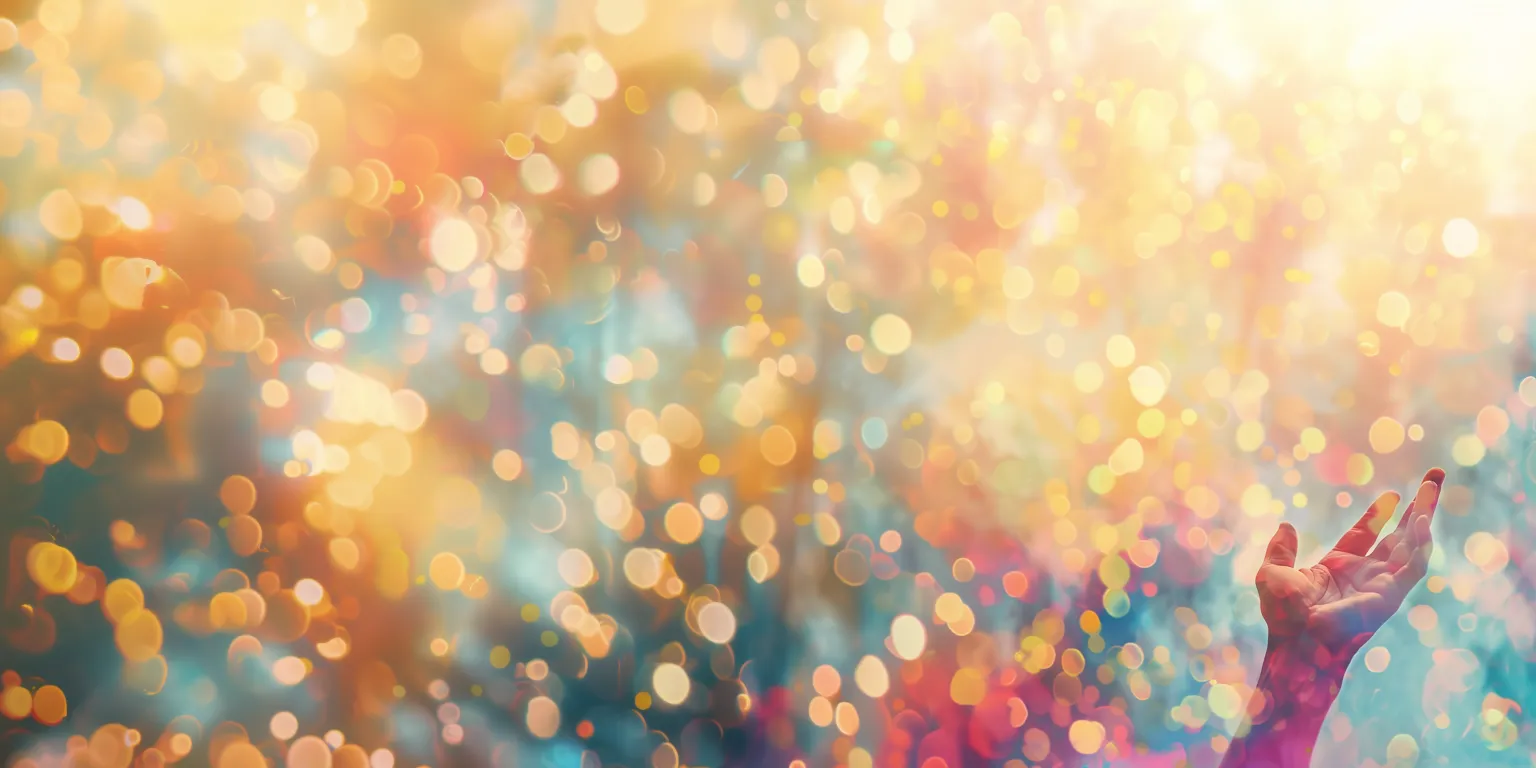


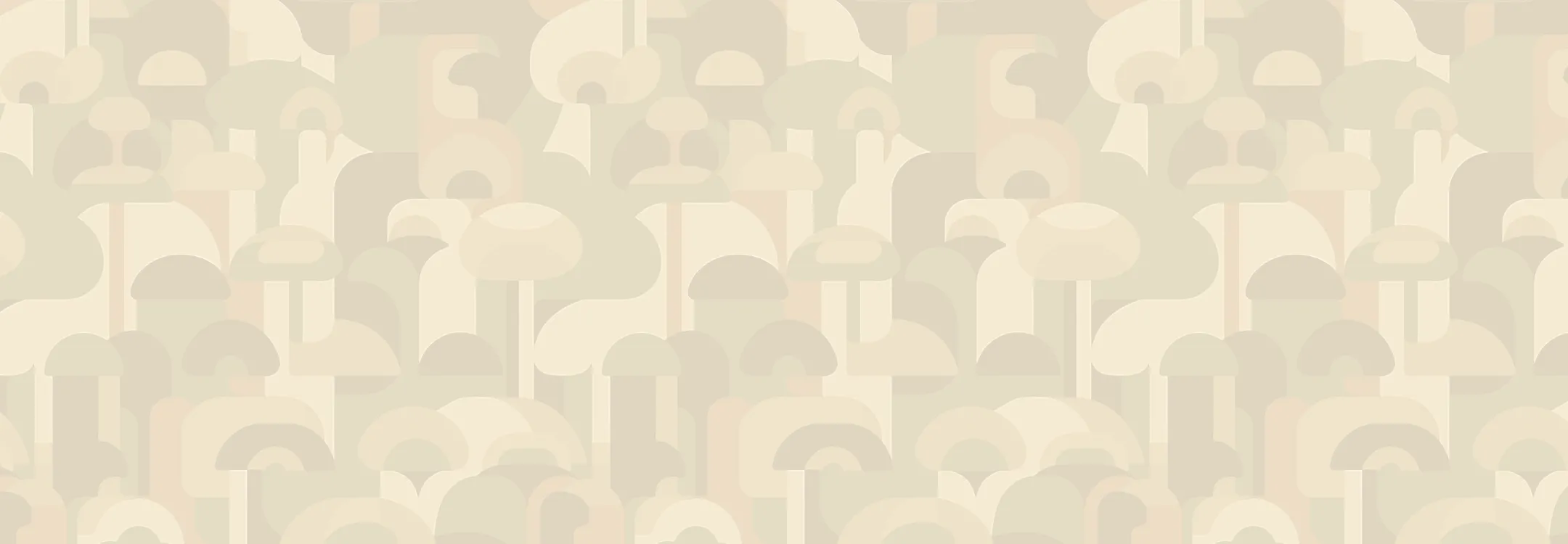


 Ben “Doc” Askins
Ben “Doc” Askins Sofie Mikhaylova
Sofie Mikhaylova David Connell
David Connell

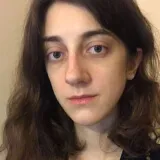 Lauren Smith
Lauren Smith
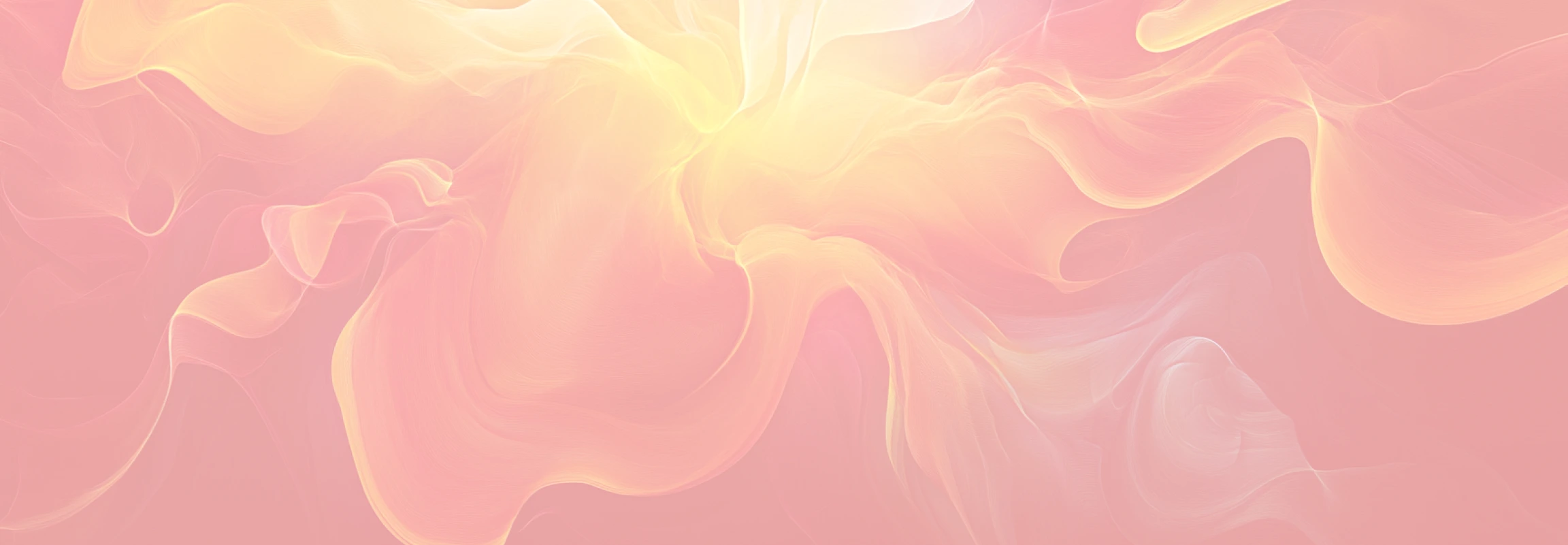
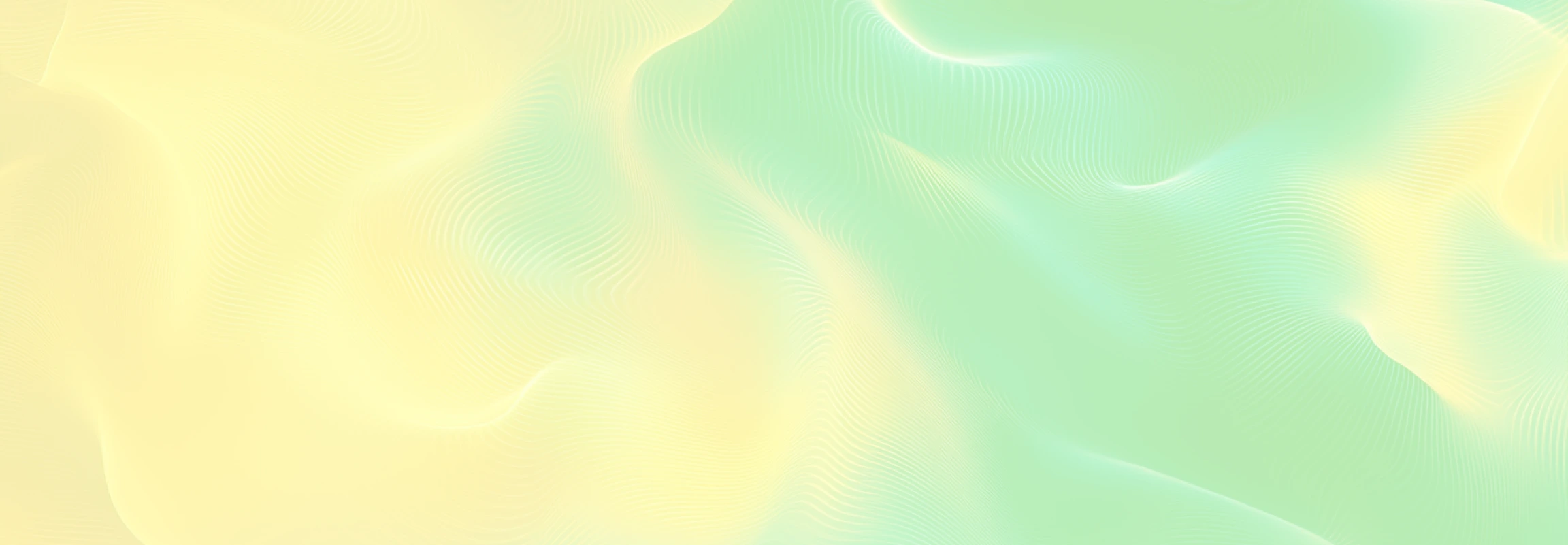
 Nick Hilden
Nick Hilden Sam Woolfe
Sam Woolfe